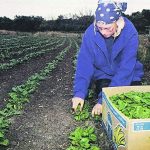Research, technology and consumer trends in the 2000s were creating opportunities and different farming options for western Canadian farmers and their families. At the University of Saskatchewan, facilities were being built and expanded that would facilitate research and biotech product development. The Canadian Light Source facility would provide scientists with clear images of the inner […] Read more
Tag Archives Farm Family Life column

Agricultural diversification was a big focus in the 1980s
The early 1980s featured interest rates as high as 21 percent, drought, and low commodity prices, so many farmers sought ways to diversify their sources of income and create more cash flow. Beekeeping, speciality livestock, fruit trees, garden produce or opening homes as bed and breakfast or vacation farms were among the many options explored. […] Read more

New developments make food preparation easier
With the end of the Second World War, the rationing of foods, building materials and consumer goods lessened. Farming incomes improved and families on the Prairies began to rebuild their lives. As metals were no longer needed for the war effort, farm equipment, vehicles, pots and pans, and appliances began to come onto the market. […] Read more

Loss of dreams in 1930s required resiliency to survive
In the late 1920s, crops had improved and farmers were receiving better prices by marketing their grain through the Saskatchewan Wheat Pool. The 1930s were ushered in with stock market crashes in the fall of 1929. The world-wide demand for wheat dropped, causing a drastic fall in the selling price and stockpiles of grain accumulated. […] Read more




